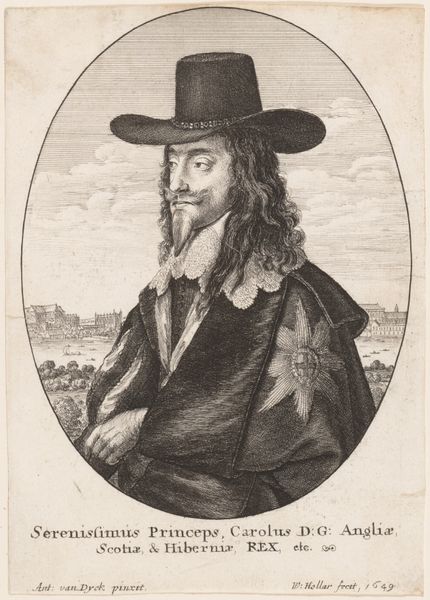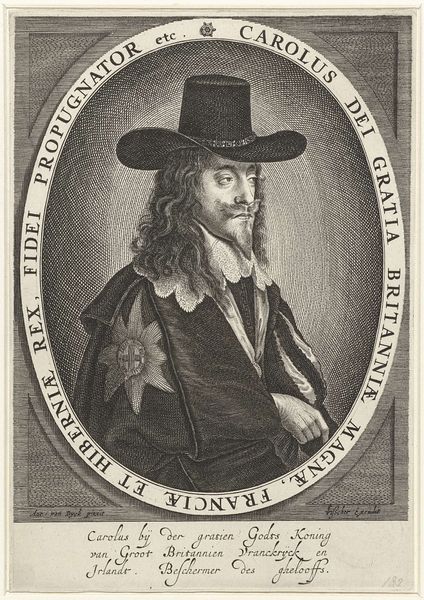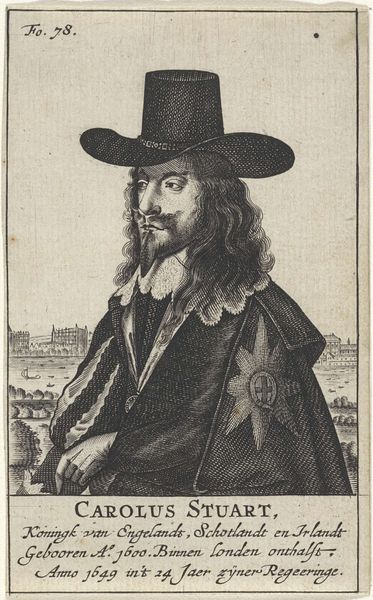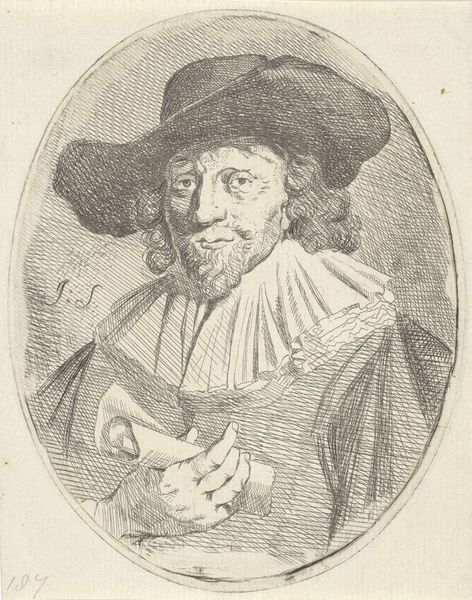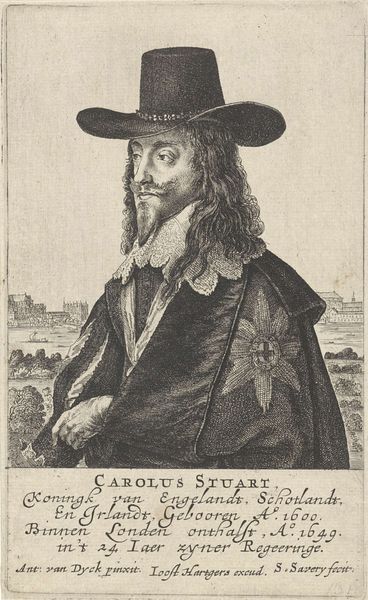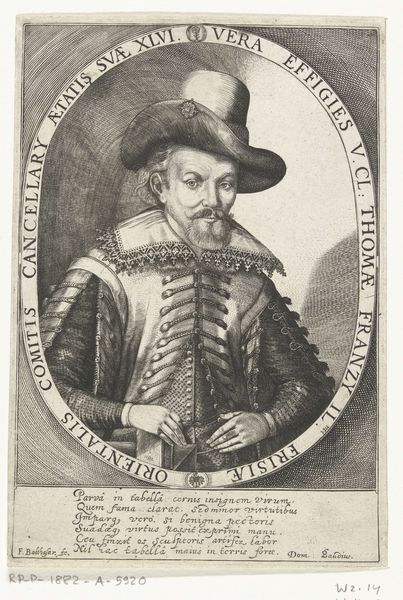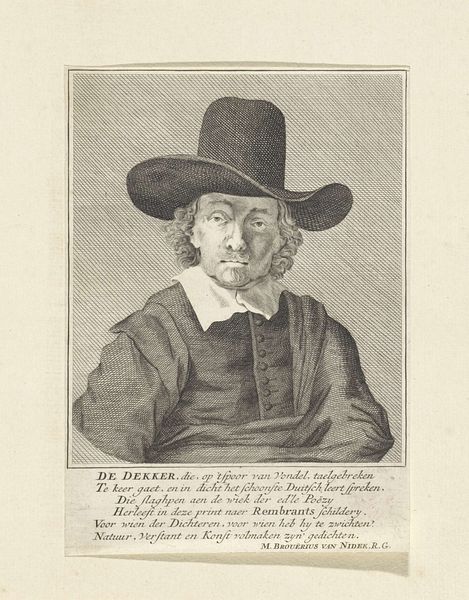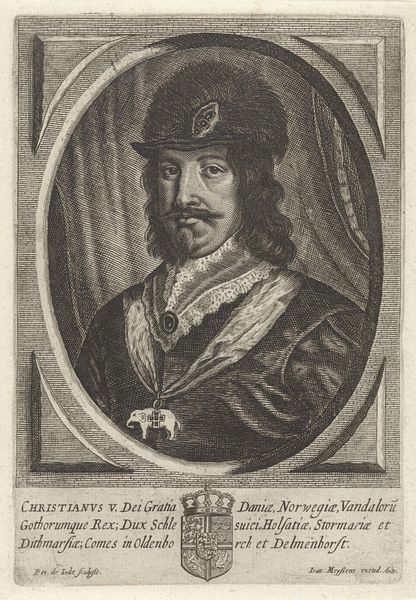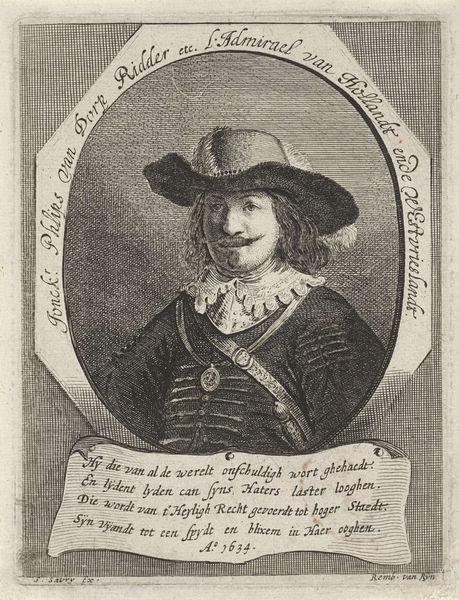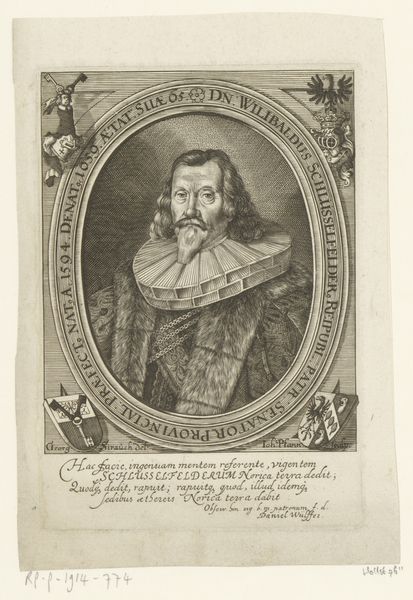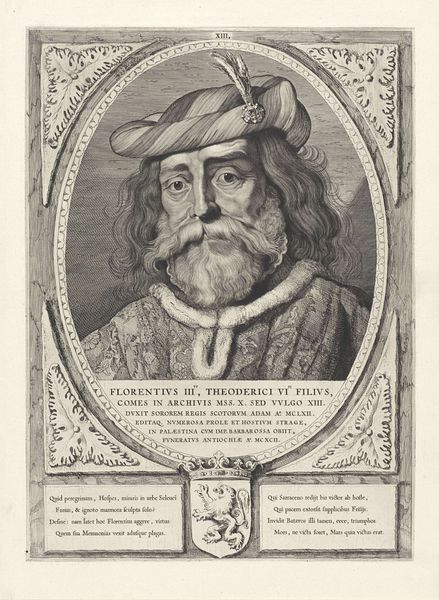
engraving
#
portrait
#
baroque
#
old engraving style
#
history-painting
#
academic-art
#
engraving
Dimensions: height 148 mm, width 121 mm
Copyright: Rijks Museum: Open Domain
This print of King Charles the First, now in the Rijksmuseum, was made anonymously using an etching technique. This process involves coating a metal plate with a waxy, protective layer, through which the image is then scratched. The plate is then submerged in acid, which bites away the exposed metal, creating an incised design that can be inked and printed. The dense network of etched lines, combined with a controlled application of ink, allow for gradients of tone that capture textures of fabric, hair, and skin. This intaglio process offered a relatively affordable means to reproduce images, allowing for broader dissemination of royal portraiture. Consider the social context: prints like these were instruments of power, reinforcing the image of the monarchy. While perhaps not as unique as a painting, the meticulous labor involved in etching and printing lends its own kind of value. By appreciating the craft, we can appreciate the wider cultural significance of this royal likeness.
Comments
No comments
Be the first to comment and join the conversation on the ultimate creative platform.
